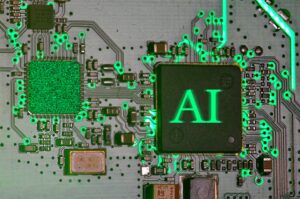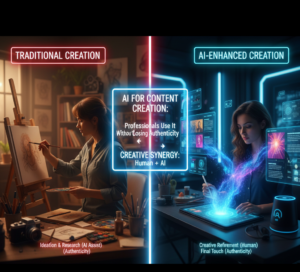How Predictive Maintenance Powered by Artificial Intelligence Is Transforming Manufacturing

How Predictive Maintenance Powered by Artificial Intelligence Is Transforming Manufacturing
In the current industrial industry, an unexpected breakdown of equipment is not only an annoyance; it may result in millions of dollars in lost income, delayed production schedules, and dissatisfied customers instead. Artificial intelligence-powered predictive maintenance is a technique that makes use of data and machine learning to ensure that equipment continue to operate in a smooth and effective manner. This is the reason why more factories and industrial plants are turning to this technology.
Let us investigate what exactly is meant by the term “predictive maintenance,” how it operates, and the reasons why it is causing a shift in the way the manufacturing sector functions.
This is a significant shift from reactive to predictive.
The traditional approach to maintenance has been either reactive, which involves mending machinery after they have broken down, or preventative, which involves maintaining equipment on a predetermined timetable regardless of whether or not it is really required. Both reactive and preventive maintenance have their drawbacks: reactive maintenance runs the risk of unexpected downtime, while preventative maintenance might spend money on fixes that aren’t essential.
Predictive maintenance that is driven by artificial intelligence provides a more intelligent solution. It continually analyzes machine data in real time, identifying tiny symptoms of wear or malfunction before they create a breakdown. This eliminates the need to wait for failure or make educated guesses. There are significant repercussions for both productivity and cost savings that result from this transition from responding to forecasting.
The Principles Behind Predictive Maintenance
In predictive maintenance, sensors and data are the two most important components. These days, machines produce a great quantity of data, which includes vibration levels, temperature fluctuations, power usage, and a wealth of other information. This information is analyzed by AI systems in order to identify trends that humans may overlook.
The algorithms that are used for machine learning are taught using historical data, which includes the appearance of normal functioning and the early warning indications of failure in the present and the past. With the passage of time, these systems become more adept at identifying early warnings. Consequently, maintenance teams will only get warnings when they are actually relevant, so preventing false alarms and directing resources to the areas in which they are required the most.
Benefits that are Genuine for Manufacturers
Not only can predictive maintenance enabled by AI reduce the number of breakdowns, but it also has other benefits. Watch out, manufacturers:
- less unscheduled downtime, which helps to ensure that production lines continue to function smoothly.
- Reduce the expenses of maintenance by avoiding the replacement of parts that are not essential.
- a longer lifetime for the equipment as a result of early management, which prevents minor problems from developing into major ones.
- the enhancement of safety, given that malfunctioning machinery often results in dangerous circumstances for personnel.
The maintenance staff are able to plan ahead for replacement parts, which helps with inventory management. This eliminates the need for them to rush together at the last minute.
Several Real-World Illustrations
Notable companies in the manufacturing industry have already begun to use predictive maintenance. Robotic welding arms at automotive facilities are monitored by artificial intelligence systems, which detect alignment problems at an early stage. In order to minimize breakdowns in refrigeration and packing equipment, food processing facilities do temperature and vibration analysis on the data they collect. For the purpose of ensuring that turbines and generators continue to operate effectively, even energy corporations are turning to predictive models.
These applications in the real world demonstrate that predictive maintenance is not only a concept from the distant future; rather, it is already revolutionizing the way factories function in the present day.
There is still value in the human touch.
Artificial intelligence is a tremendous tool, but it cannot replace the skill of humans. The investigation of alarms, interpretation of context, and making of final judgments are still performed by skilled maintenance specialists. The true shift will occur when these experts are provided with improved knowledge and liberated from mundane chores, allowing them to concentrate on doing work that is more difficult and of higher value.
The Future of Predictive Maintenance: What Does It Hold?
There is a good chance that predictive maintenance will become even more intelligent in the future. Systems will be able to forecast not just when a machine could break, but also why it might fail, recommending targeted remedies and optimizing production schedules around maintenance intervals as a result of advancements in artificial intelligence. The integration of cloud-based systems and digital twins might make it possible for managers to monitor whole factories from any location in the globe.
Even small and medium-sized firms will be able to employ these technologies as the prices of sensors and artificial intelligence software continue to reduce. This will result in predictive maintenance being a normal component of contemporary business.
Predictive maintenance that is driven by artificial intelligence is not only about replacing technology; rather, it is about redefining the culture of manufacturing. manufacturers are now able to foresee and avoid issues, which improves productivity, safety, and profitability. Previously, factories had to respond to problems as they occurred.
If manufacturers are confronted with growing prices and competition from across the world, this change may be the deciding factor in whether they fall behind or remain ahead of the market.






